#ancient military history
Explore tagged Tumblr posts
Note
I didn’t know about the Spartan Mirage. Could you please elaborate on it? Is it something from Antiquity or a modern distortion?
The Spartan Mirage
I will link below to a couple other write-ups on the Spartan Mirage that are reputable, and longer than I have time for here.
But in brief, the Spartan Mirage has become a shorthand for misperceptions of Sparta from antiquity to the present. The “imagined” Sparta versus actual Sparta.
People often prefer myths to reality (as we also see with Alexander), and some groups can get quite angry if you poke holes in their cherished myths. Sparta is elevated by the US Marines; I’ve given up trying to have a coherent conversation with the average marine about Sparta, as I’m either routinely dismissed as a wild-eyed Liberal, patted on the head as “Isn’t she cute, that she thinks she knows military history?” or corrected and mansplained to by guys (they’re always guys) who know jack shit about ancient Greece or the ancient sources, and can’t read Greek.
But we also have a quite serious historiographic problem, as virtually all our sources about Sparta, especially later Sparta, weren’t written by Spartans. And the people who did write them tended either to idolize Sparta, or thought she was batshit. Not helpful. Archaeology (and art history) are useful correctives. But the Spartans liked being mysterious, and cultivated it. They weren’t a tourist destination, and non-Spartans weren’t allowed to stay past a certain amount of time without special dispensation from the kings or somebody else very important. Literally, they kicked you out. They wanted to control how they were seen by outsiders.
So it’s important to understand the difficulties.
The Spartan Mirage goes back into antiquity; it’s not just modern, or even Renaissance. There are, to my mind, three chief contributors to it. Others aided and abetted, but we can lay the formation and continuation of the myth at the feet of Herodotus, Xenophon, and Plutarch. Take away those three, and much of the mythology of Sparta goes poof. Thucydides, predictably, takes a more nuanced approach, as does Aristotle, and the Attic orators (or they’re hostile). I’ll also add that Herodotus’s portrait is not uniformly positive; he’s a more careful writer than some credit him.
So yes, Sparta was a weird place, highly insular—but less weird than sometimes presented. She simply institutionalized/formalized some social dynamics common elsewhere. And the really wacky stories are largely from Plutarch, so late, and suspect. I’d submit that Sparta accidentally created her own myth during the second Persian War, but found it useful and kept it, until it broke down in the pressure cooker of the Peloponnesian War. But it kept coming back like a military zombie.
For just one example, the famous quip, “Molon labe” (“Come and get them” [Spartan weapons]) from Leonnatos to Xerxes is almost certainly fabricated. Plutarch records it centuries later, and it’s not even Doric (Spartan) Greek. There are serious problems with how the phrase would have been remembered or transmitted. Herodotus doesn’t record it. In the immediate aftermath of the Persian Wars, the story of Thermopylae suited the victory tale of the Persian Wars, but as noted, it fell apart after 27 years of ugly conflict in the Peloponnesian War when events such as the capture of Spartans at Sphacteria blew up the Spartan Mirage in ancient Greek pop culture.
Yet it remained a useful myth. Plutarch (et al.) used it in the era of the Second Sophistic, as Greeks under the heel of the Roman Empire needed to remember their “glorious past.” So like a Big Fish tale, the legend of Thermopylae just kept evolving in the ancient world—and later centuries too, right down to today.
Tales like Thermopylae, that promise eternal fame/glory, inspire later generations to lay their lives on the line, or even to give up their lives willingly. “Like Sparta.” A person needs something to hold onto in the face of their own death. Sparta (and the rest of Greece) knew that. So do the Marines.
So here are some articles on it:
Bret Devereaux’s cheeky “This. Isn’t. Sparta.” (Bret knows his military shit.)
Paul Rahe’s “Was There a Spartan Mirage?” (Presents differing ancient views, although he thinks a lot more highly of Plutarch than I do)
A rather decent look at Sparta on Reddit by some person named Iphikrates. Have no idea who he is, but it has a very useful reading list at the end.
Last … Sarah Pomeroy’s Spartan Women is not about the mirage, and a book, but excellently researched and she helps poke holes in aspects of popular ideas about Sparta.
#asks#ancient Sparta#The Spartan Mirage#Thermopylae#Plutarch#Herodotus#Classics#ancient Greece#Marines#military history#ancient military history#tagamemnon
34 notes
·
View notes
Text



Horse's Chamfron from Hexham, England dated between the 1st and 2nd Centuries on display at Roman Vindolanda Fort and Museum in Hexham, England
This almost complete chamfron (a hourse's ceremonial face mask) was found amongst the remains of the Praetorium (residence of the Prefect) of Flavius Cerialis, the prefect of the 9th Cohort of Batavians. Many of the bronze fittings were removed in antiquity, presumably so that they could be fitted onto a replacement.
Photographs taken by myself 2022
#art#archaeology#military history#fashion#armour#cavalry#ancient#england#english#roman empire#iron age#roman vindolanda fort and museum#hexham#barbucomedie
86 notes
·
View notes
Text
Trimontium Roman Fort
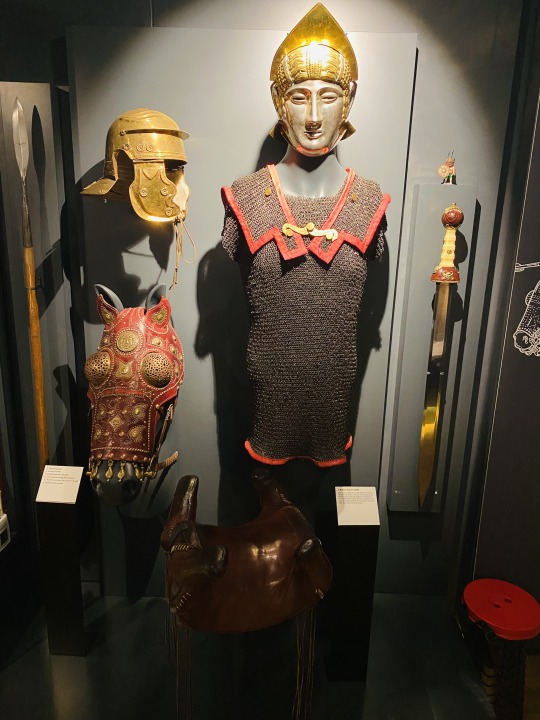
A departure from the Early Modern period to do a thread about the Roman fort of Trimontium in what is now the Scottish borders. I visited the museum at the weekend, and it was great! 1/14
Trimontium, now called Newstead, was first built about around 80 AD, during the Roman General Agricola’s invasion of Caledonia. It stood for over a century in an area known as Trimontium – between three hills.
The land had been occupied by native tribes since at least the Iron Age, with multiple settlements existing on the slopes surrounding the fort.
It served as a military base in Caledonia, and seems to have primarily been a cavalry depot for long periods – there are lots of horse remains, as well as these helmets and ceremonial faceplates belonging to Roman cavalrymen.

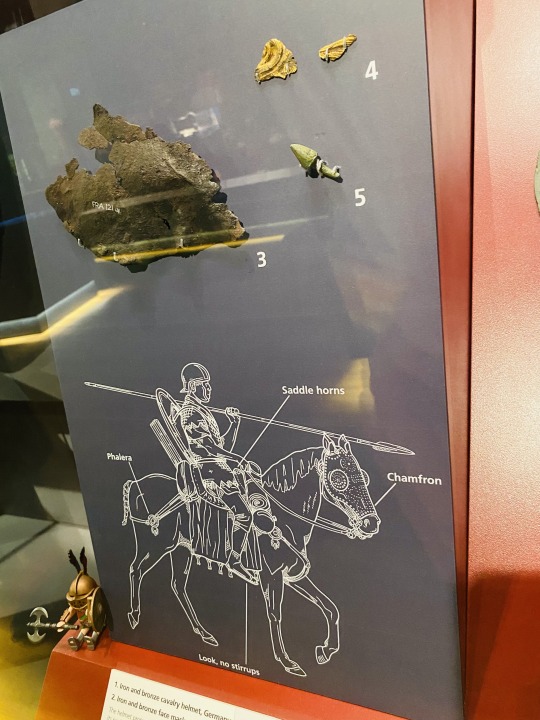
The XX Legion spent time there (as did the VIII, earlier on), as evidenced by the remains of this plaque.

A Roman soldier’s service record!

The fort’s strategic function shifted over time –it was a bulwark existing beyond Hadrian’s Wall, then after the construction of the Antonine Wall further north it became more of a logistical hub, then resumed being a frontier fort after the Antonine Wall’s abandonment.


Small settlements sprung up around the fort’s walls, and it is likely there were regular peaceful contact with the surrounding tribes. However there is also evidence of conflict. Roman forts came under sustained attack across several periods, and it looks as though when the fort was finally abandoned, it was done so in a hurry.
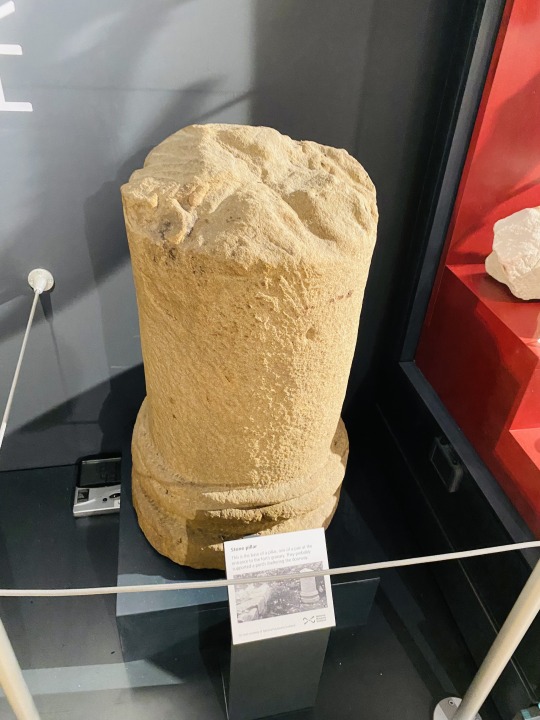
As per soldiers from the Ancient World to modern-day Iraq and Afghanistan, when the troops move out they leave a lot behind – lucky for the archaeologists and historians.
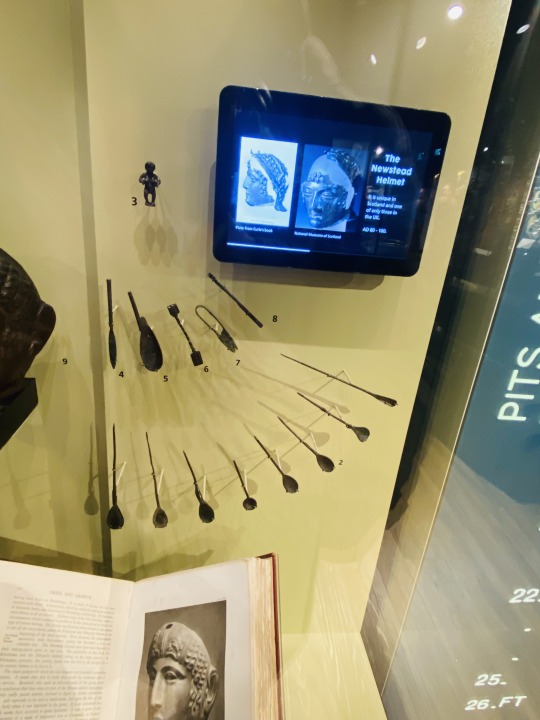
I am amused by how miserable Roman soldiers must have been after getting assigned to northern Britain. The ends of the earth indeed! I also do scoff at the whole “I think about Rome every day” meme, but I can see the allure, and I find it extremely interesting comparing and contrasting what I know about 18th c. militaries with the Roman Army. There were definitely a fair few things that I think the Romans were better at, especially when it comes to organisation, logistics and efficiencies!

#history#military history#roman history#scottish history#scotland#scottish#rome#roman#roman empire#ancient history#classics#classical history
153 notes
·
View notes
Text
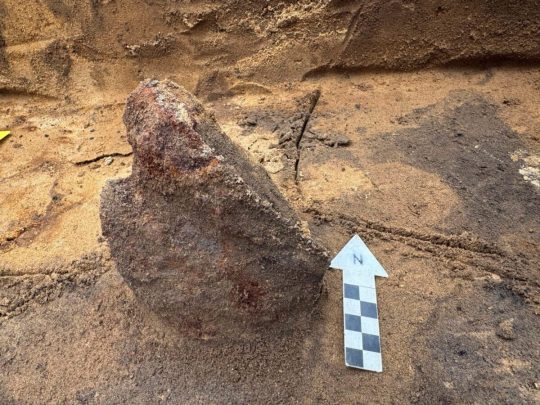
Rare 4th Century Roman Helmet and Chainmail Found in Denmark
Archaeologists have recently unearthed a massive stockpile of weapons near Hedensted, Denmark, buried 1,500 years ago by an ancient chief. In addition to many weapons and unique chainmail, fragments of a Roman helmet from the 4th century have also been found.
During recent archaeological excavations at Løsning Søndermark in Hedensted, Denmark, a significant discovery has been made that sheds light on the region’s Iron Age history, dating back 1,500 to 2,000 years. Archaeologists unearthed a burial site containing an extensive array of weapons, sufficient to equip a small army, alongside a remarkable chainmail shirt and other valuable artifacts. This find suggests that the site belonged to a powerful chieftain, and the manner of the burial indicates that these war implements may have been offered to higher powers.
The excavation was prompted by the Danish Road Directorate’s ongoing project to expand the motorway to three lanes, leading to the unearthing of these extraordinary artifacts just northwest of Hedensted, situated between Vejle and Horsens.

Some of the half-buried weapons found in Løsning
In addition to the extensive weapon deposits, archaeologists have discovered two unusual iron plates, each approximately the size of a human palm. Initially, the origins of these plates were uncertain. However, through the application of X-ray imaging technology, conservators and archaeologists were able to penetrate the thick layers of rust that obscured the objects.
The imaging results revealed an extraordinary and rare discovery: the remnants of a Roman helmet. The two plates identified consist of a neck guard and a intricately decorated cheek guard, which are components of a crest helmet—a type commonly utilized during the 4th century within the Roman Empire.

The illustrations show the placement of the neck and cheek guard on a Roman helmet. The top of the helmet has not been found, so its appearance remains purely speculative
Finds of Roman helmets from the Iron Age are exceptionally uncommon in southern Scandinavia, and this particular discovery lacks direct parallels within the region. The few comparable artifacts have been located at Thorsbjerg Moor in Schleswig, as well as in southern Sweden and Gotland, with no similar finds recorded in Denmark itself.

An X-ray scan shows the fragments of an ancient Roman helmet found in Løsning
In addition, a chainmail shirt was discovered at Løsning Søndermark. Only a very small number of chainmail shirts from the Iron Age have been found in the southern Scandinavian region. Notably, the chainmail unearthed at Løsning Søndermark is particularly remarkable as it is the first instance found in association with a settlement, rather than being recovered from a burial site or bog.
The production of chainmail required specialized expertise, access to resources, and a considerable, sustained effort. Consequently, these expensive pieces of armor were owned exclusively by the highest echelons of the warrior elite in society, underscoring their status and importance.

The ancient chainmail shirt found in Løsning
In addition to the extensive weapon sacrifice, archaeologists have uncovered fragments of two highly distinctive bronze neck rings at the Løsning Søndermark site. These rings exhibit striking similarities to imagery found on gold bracteates from the Vindelev Hoard, as well as other representations of Iron Age rulers.
The motif of a ring-bearer holding an oath ring in one hand, symbolizing power and influence, is a well-established theme in Nordic imitations of Roman gold medallions and gold bracteates. It is likely that the rings discovered at Løsning Søndermark served a similar function and may have been integral to the chieftain’s personal equipment, alongside the chainmail, sword, horse gear, and other military items that were part of the sacrificial offerings.

Two ring fragments found in Løsning
Notably, the ring-bearer depicted on the Vindelev bracteates is also adorned in a garment featuring an unusual pattern, which may represent chainmail akin to that found at Løsning Søndermark.
Starting Saturday, February 8, 2025, selected items from this remarkable find, including fragments of a Roman helmet, will be exhibited at the Cultural Museum in Vejle, providing the public with an opportunity to engage with Denmark’s rich archaeological heritage.
By Oguz Buyukyildirim.

Some of the swords and other weapons found in Denmark
#Rare 4th Century Roman Helmet and Chainmail Found in Denmark#Løsning Søndermark#Hedensted Denmark#roman military equipment#ancient artifacts#archeology#archeolgst#history#history news#ancient history#ancient culture#ancient civilizations#iron age#roman history#roman empire
35 notes
·
View notes
Text

Campanian/Etruscan small bronze statue depicting a Scythian archer and his horse. The archer is removable. The horse is a piece meant to be placed atop an urn.
5th Century BCE. Currently in the Metropolitan Museum of Art.
#art#culture#history#ancient culture#ancient art#ancient history#scythians#scythian#campania#campanian#etruscan#military history#the metropolitan#the met#the metropolitan museum of art
116 notes
·
View notes
Text






The Roman Army from Caesar to Trajan
Roman legionary armor was a sophisticated and adaptable system designed for the effectiveness and endurance of the soldier in battle. The most iconic component was the lorica segmentata, a series of interlocking iron or steel strips that protected the torso while allowing mobility, reinforced with leather straps and buckles. Earlier armor styles included chainmail (lorica hamata) or scale armor (lorica squamata), offering flexibility and widespread use. The helmet (galea) featured a protective brow ridge, cheek guards, and a neck plate to shield vital areas without obstructing vision or movement. A rectangular shield (scutum), made of layered wood and covered in leather or canvas, provided both personal and group defense, particularly in formation tactics like the testudo. Complementing this, the legionary carried a short thrusting sword (gladius) and a throwing spear (pilum), emphasizing their role as disciplined and versatile heavy infantry in the Roman military machine.
From "The Roman Army from Caesar to Trajan"
#military art#history#roman history#Caesar#Augustus#Trajan#Roman Empire#Roman Legionary#Legionary#Roman armor#ancient rome#roman mythology
38 notes
·
View notes
Text

#threads#threads app#Yasuke#ac yasuke#history#history posting#history tumblr#history side of tumblr#samurai#japanese history#ancient history#military history#assassins creed shadows
87 notes
·
View notes
Text
Countries that are no more: Achaemenid Empire (550BC-330BC)
It was not the first empire of Iranian peoples, but it arose as probably the greatest in terms of influence and became the measure by which all subsequent Iranian empires tended to compare themselves and its influence on culture, government & civil infrastructure would influence others beyond the span of its territory and the span of time. This is the Achaemenid Empire.
Name: In Old Persian it was known as Xšāça or the "The Kingdom or the Empire", it was named the Achaemenid Empire by later historians. Named after the ruling dynasty established by its founder Cyrus the Great who cited the name of his ancestor Haxāmaniš or Achaemenes in Greek as progenitor of the dynasty. It is sometimes also referred to as the First Persian Empire. The Greeks simply referred to it as Persia, the name which stuck for the geographic area of the Iranian plateau well into the modern era.
Language: Old Persian & Aramaic were the official languages. With Old Persian being an Iranian language that was the dynastic language of the Achaemenid ruling dynasty and the language of the Persians, an Iranian people who settled in what is now the southwestern Iranian plateau or southwest Iran circa 1,000 BC. Aramaic was a Semitic language that was the common and administrative language of the prior Neo-Assyrian & Neo-Babylonian Empires which centered in Mesopotamia or modern Iraq, Syria & Anatolian Turkey. After the Persian conquest of Babylon, the use of Aramaic remained the common tongue within the Mesopotamian regions of the empire, eventually becoming a lingua franca across the land. As the empire spread over a vast area and became increasingly multiethnic & multicultural, it absorbed many other languages among its subject peoples. These included the Semitic languages Akkadian, Phoenician & Hebrew. The Iranian language of Median among other regional Iranian languages (Sogdian, Bactrian etc). Various Anatolian languages, Elamite, Thracian & Greek among others.
Territory: 5.5 million kilometers squared or 2.1 million square miles at its peak circa 500BC. The Achaemenid Empire spanned from southern Europe in the Balkans (Greece, Bulgaria, European Turkey) & northwest Africa (Egypt, Libya & Sudan) in the west to its eastern stretches in the Indus Valley (Pakistan) to parts of Central Asia in the northeast. It was centered firstly in the Iranian Plateau (Iran) but also held capitals in Mesopotamia (Iraq). Territory was also found in parts of the Arabian Peninsula & the Caucausus Mountains.
Symbols & Mottos: The Shahbaz or Derafsh Shahbaz was used as the standard of Cyrus the Great, founder of the empire. It depicts a bird of prey, typically believed to be a falcon or hawk (occasionally an eagle) sometimes rendered gold against a red backdrop and depicts the bird holding two orbs in its talons and adorned with an orb likewise above its head. The symbolism was meant to depict the bird guiding the Iranian peoples to conquest and to showcase aggression & strength coupled with dignity. The imperial family often kept falcons for the pastime of falconry.
Religion: The ancient Iranian religion of Zoroastrianism served as the official religion of the empire. It was adopted among the Persian elite & and had its unique beliefs but also helped introduce the concept of free-will among its believers, an idea to influence Judaism, Christianity & Islam in later centuries. Despite this official religion, there was a tolerance for local practices within the subject regions of the empire. The ancient Mesopotamian religion in Babylon & Assyria, Judaism, the Ancient Greek & Egyptian religions & Vedic Hinduism in India was likewise tolerated as well. The tolerance of the Achaemenids was considered a relative hallmark of their dynasty from the start. Famously, in the Old Testament of the Bible it was said that it was Cyrus the Great who freed the Jews from their Babylonian captivity and allowed them to return to their homeland of Judea in modern Israel.
Currency: Gold & silver or bimetallic use of coins became standard within the empire. The gold coins were later referred to as daric and silver as siglos. The main monetary production changes came during the rule of Darius I (522BC-486BC). Originally, they had followed the Lydian practice out of Anatolia of producing coins with gold, but the practice was simplified & refined under the Achaemenids.
Population: The estimates vary ranging from a low end of 17 million to 35 million people on the upper end circa 500BC. The official numbers are hard to determine with certainty but are generally accepted in the tens of millions with the aforementioned 17-35 million being the most reasonable range based on available sources.
Government: The government of the Achaemenid Empire was a hereditary monarchy ruled by a king or shah or later referred to as the ShahanShah or King of Kings, this is roughly equivalent to later use of the term Emperor. Achaemenid rulers due the unprecedented size of their empire held a host of titles which varied overtime but included: King of Kings, Great King, King of Persia, King of Babylon, Pharaoh of Egypt, King of the World, King of the Universe or King of Countries. Cyrus the Great founded the dynasty with his conquest first of the Median Empire and subsequently the Neo-Babylonians and Lydians. He established four different capitals from which to rule: Pasargadae as his first in Persia (southwest central Iran), Ecbatana taken from the Medians in western Iran's Zagros Mountains. The other two capitals being Susa in southwest Iran near and Babylon in modern Iraq which was taken from the Neo-Babylonians. Later Persepolis was made a ceremonial capital too. The ShahanShah or King of Kings was also coupled with the concept of divine rule or the divinity of kings, a concept that was to prove influential in other territories for centuries to come.
While ultimate authority resided with the King of Kings and their bureaucracy could be at times fairly centralized. There was an expansive regional bureaucracy that had a degree of autonomy under the satrapy system. The satraps were the regional governors in service to the King of Kings. The Median Empire had satraps before the Persians but used local kings they conquered as client kings. The Persians did not allow this because of the divine reverence for their ShahanShah. Cyrus the Great established governors as non-royal viceroys on his behalf, though in practice they could rule like kings in all but name for their respective regions. Their administration was over their respective region which varied overtime from 26 to 36 under Darius I. Satraps collected taxes, acted as head over local leaders and bureaucracy, served as supreme judge in their region to settle disputes and criminal cases. They also had to protect the road & postal system established by the King of Kings from bandits and rebels. A council of Persians were sent to assist the satrap with administration, but locals (non-Persian) could likewise be admitted these councils. To ensure loyalty to the ShahanShah, royal secretaries & emissaries were sent as well to support & report back the condition of each satrapy. The so called "eye of the king" made annual inspections of the satrapy to ensure its good condition met the King of Kings' expectations.
Generals in chief were originally made separate to the satrap to divide the civil and military spheres of government & were responsible for military recruitment but in time if central authority from the ShahanShah waned, these could be fused into one with the satrap and general in chiefs becoming hereditary positions.
To convey messages across the widespread road system built within the empire, including the impressive 2,700 km Royal Road which spanned from Susa in Iran to Sardis in Western Anatolia, the angarium (Greek word) were an institution of royal messengers mounted on horseback to ride to the reaches of the empire conveying postage. They were exclusively loyal to the King of Kings. It is said a message could be reached to anywhere within the empire within 15 days to the empire's vast system of relay stations, passing message from rider to rider along its main roads.
Military: The military of the Achaemenids consisted of mostly land based forces: infantry & cavalry but did also eventually include a navy.
Its most famous unit was the 10,000-man strong Immortals. The Immortals were used as elite heavy infantry were ornately dressed. They were said to be constantly as 10,000 men because for any man killed, he was immediately replaced. Armed with shields, scale armor and with a variety of weapons from short spears to swords, daggers, slings, bows & arrows.
The sparabara were the first line of infantry armed with shields and spears. These served as the backbone of the army. Forming shield walls to defend the Persian archers. They were said to ably handle most opponents and could stop enemy arrows though their shields were vulnerable to enemy spears.
There was also the takabara light infantry and though is little known of them it seems they served as garrison troops and skirmishers akin to the Greek peltast of the age.
The cavalry consisted of four distinct groups: chariot driven archers used to shoot down and break up enemy formations, ideally on flat grounds. There was also the traditional horse mounted cavalry and also camel mounted cavalry, both served the traditional cavalry functions and fielded a mix of armor and weapons. Finally, there was the use of war elephants which were brought in from India on the empire's eastern reaches. These provided archers and a massive way to physically & psychologically break opposing forces.
The navy was utilized upon the empire's reaching the Mediterranean and engaged in both battles at sea and for troop transport to areas where troops needing deploying overseas, namely in Greece.
The ethnic composition of Achaemenid military was quite varied ranging from a Persian core with other Iranian peoples such as the Medians, Sogdian, Bactrians and Scythians joining at various times. Others including Anatolians, Assyrians, Babylonians, Anatolians, Indians, Arabs, Jews, Phoenicians, Thracians, Egyptians, Ethiopians, Libyans & Greeks among others.
Their opponents ranged from the various peoples they conquered starting with the Persian conquest of the Medians to the Neo-Babylonians, Lydians, Thracians, Greeks, Egyptians, Arabs & Indians and various others. A hallmark of the empire was to allow the local traditions of subjugated areas to persist so long as garrisons were maintained, taxes were collected, local forces provided levies to the military in times of war, and they did not rebel against the central authority.
Economy: Because of the efficient and extensive road system within the vast empire, trade flourished in a way not yet seen in the varied regions it encompassed. Tax districts were established with the satrapies and could be collected with relative efficiency. Commodities such as gold & jewels from India to the grains of the Nile River valley in Egypt & the dyes of the Phoenicians passed throughout the realm's reaches. Tariffs on trade & agricultural produce provided revenue for the state.
Lifespan: The empire was founded by Cyrus the Great circa 550BC with his eventual conquest of the Median & Lydian Empires. He started out as Cyrus II, King of Persia a client kingdom of the Median Empire. His reign starting in 559BC. Having overthrown and overtaken the Medians, he turned his attention Lydia and the rest of Anatolia (Asia Minor). He later attacked the Eastern Iranian peoples in Bactria, Sogdia and others. He also crossed the Hindu Kush mountains and attacked the Indus Valley getting tribute from various cities.
Cyrus then turned his attention to the west by dealing with the Neo-Babylonian Empire. Following his victory in 539BC at the Battle of Opis, the Persians conquered the Babylonia with relative quickness.
By the time of Cyrus's death his empire had the largest recorded in world history up to that point spanning from Anatolia to the Indus.
Cyrus was succeeded by his sons Cambyses II and Bardiya. Bardiya was replaced by his distant cousin Darius I also known as Darius the Great, whose lineage would constitute a number of the subsequent King of Kings.
Darius faced many rebellions which he put down in succession. His reign is marked by changes to the currency and the largest territorial expansion of the empire. An empire at its absolute zenith. He conquered large swaths of Egypt, the Indus Valley, European Scythia, Thrace & Greece. He also had exploration of the Indian Ocean from the Indus River to Suez Egypt undertaken.
The Greek kingdom of Macedon in the north reaches of the Hellenic world voluntarily became a vassal of Persia in order to avoid destruction. This would prove to be a fateful first contact with this polity that would in time unite the Greek-speaking world in the conquest of the Achaemenid Empire. However, at the time of Darius I's the reign, there were no early indications of this course of events as Macedon was considered even by other Greek states a relative backwater.
Nevertheless, the Battle of Marathon in 490BC halted the conquest of mainland Greece for a decade and showed a check on Persia's power in ways not yet seen. It is also regarded as preserving Classical Greek civilization and is celebrated to this day as an important in the annals of Western civilization more broadly given Classical Greece & in particular Athens's influence on western culture and values.
Xerxes I, son of Darius I vowed to conquer Greece and lead a subsequent invasion in 480BC-479BC. Xerxes originally saw the submission of northern Greece including Macedon but was delayed by the Greeks at the Battle of Thermopylae, most famously by Spartan King Leonidas and his small troop (the famed 300). Though the Persians won the battle it was regarded as a costly victory and one that inspired the Greeks to further resistance. Though Athens was sacked & burnt by the Persians, the subsequent victories on sea & land at Salamis & Plataea drove the Persians back from control over Greece. Though war would rage on until 449BC with the expulsion of the Persians from Europe by the Greeks.
However, the Greeks found themselves in a civil war between Athens & Sparta and Persia having resented the Athenian led coalition against their rule which had expelled them from Europe sought to indirectly weaken the Greeks by supporting Greek factions opposed to Athens through political & financial support.
Following this reversal of fortune abroad, the Achaemenid Empire not able to regain its foothold in Europe, turned inward and focused more on its cultural development. Zoroastrianism became the de-facto official religion of the empire. Additionally, architectural achievements and improvements in its many capitals were undertaken which displayed the empire's wealth. Artaxerxes II who reigned from 405BC-358BC had the longest reign of any Achaemenid ruler and it was characterized by relative peace and stability, though he contended with a number of rebellions including the Great Satraps Revolt of 366BC-360BC which took place in Anatolia and Armenia. Though he was successful in putting down the revolt. He also found himself at war with the Spartans and began to sponsor the Athenians and others against them, showcasing the ever dynamic and changing Greco-Persian relations of the time.
Partially for safety reasons, Persepolis was once again made the capital under Artaxerxes II. He helped expand the city and create many of its monuments.
Artaxerxes III feared the satraps could no longer be trusted in western Asia and ordered their armies disbanded. He faced a campaign against them which suffered some initial defeats before overcoming these rebellions, some leaders of which sought asylum in the Kingom of Macedon under its ruler Philip II (father of Alexander the Great).
Meanwhile, Egypt had effectively become independent from central Achaemenid rule and Artaxerxes III reinvaded in around 340BC-339BC. He faced stiff resistance at times but overcame the Egyptians and the last native Egyptian Pharaoh Nectanebo II was driven from power. From that time on ancient Egypt would be ruled by foreigners who held the title Pharaoh.
Artaxerxes III also faced rebellion from the Phoenicians and originally was ejected from the area of modern coastal Lebanon, Syria & Israel but came back with a large army subsequently reconquered the area including burning the Phoenician city of Sidon down which killed thousands.
Following Artaxerxes III's death his son succeeded him but a case of political intrigue & dynastic murder followed. Eventually Darius III a distant relation within the dynasty took the throne in 336BC hoping to give his reign an element of stability.
Meanwhile in Greece, due to the military reforms and innovations of Philip II, King of Macedon, the Greek speaking world was now unified under Macedon's hegemony. With Philip II holding the title of Hegemon of the Hellenic League, a relatively unified coalition of Greek kingdoms and city-states under Macedon premiership that formed to eventually invade Persia. However, Philip was murdered before his planned invasion of Asia Minor (the Achaemenid's westernmost territory) could commence. His son Alexander III (Alexander the Great) took his father's reforms and consolidated his hold over Greece before crossing over to Anatolia himself.
Darius III had just finished reconquering some rebelling vestiges of Egypt when Alexander army crossed over into Asia Minor circa 334BC. Over the course of 10 years Alexander's major project unfolded, the Macedonian conquest of the Persian Empire. He famously defeated Persians at Granicus, Issus and Gaugamela. The latter two battles against Darius III in person. He took the King of Kings family hostage but treated them well while Darius evacuated to the far eastern reaches of his empire to evade capture. He was subsequently killed by one of his relatives & satraps Bessus, whom Alexander eventually had killed. Bessus had declared himself King of Kings though this wasn't widely recognized and most historians regard Darius III, the last legitimate ShahanShah of Achaemenids.
Alexander had taken Babylon, Susa & Persepolis by 330BC and effectively himself was now ruler of the Persian Empire or at least its western half. In addition to being King of Macedon & Hegemon of the Hellenic League, he gained the titles King of Persia, Pharaoh of Egypt & Lord of Asia. Alexander would in time eventually subdue the eastern portions of the Achaemenid realm including parts of the Indus Valley before turning back to Persia and Babylon where he subsequently became ill and died in June 323BC at age 32. Alexander's intentions it appears were never to replace the Achaemenid government & cultural structure, in fact he planned to maintain and hybridize it with his native Greek culture. He was in fact an admirer of Cyrus the Great (even restoring his tomb after looting) & adopted many Persian customs and dress. He even allowed the Persians to practice their religion and had Persian and Greeks start to serve together in his army. Following his death and with no established successor meant the empire he established which essentially was the whole Achaemenid Empire's territory in addition to the Hellenic world fragmented into different areas run by his most trusted generals who established their own dynasties. The Asian territories from Anatolia to the Indus (including Iran and Mesopotamia) gave way to the Hellenic ruled Seleucid Empire while Egypt became the Hellenic ruled Ptolemaic Kingdom. The synthesis of Persian and Greek cultures continued in the Seleucid and Greco-Bactrian kingdoms of antiquity.
The Achaemenid Empire lasted for a little over two centuries (550BC-330BC) but it casted a long shadow over history. Its influence on Iran alone has persisted into the modern age with every subsequent Persian Empire claiming to be its rightful successor from the Parthian & Sasanian Empires of pre-Islamic Iran to the Safavids of the 16th-18th century and the usage of the title Shah until the last Shah's ejection from power in the 1979 Islamic Revolution. Even the modern Islamic Republic of Iran uses Achaemenid imagery in some military regiments and plays up its importance in tourism and museums as a source of pride to Persian (Farsi) & indeed Iranian heritage. Likewise, its form of governance and the pushing of the concept of divine rights of kings would transplant from its Greek conquerors into the rest of Europe along with various other institutions such as its road & mail system, tax collection & flourishing trade. Its mix of centralized & decentralized governance. Its religious & cultural tolerance of local regions even after their conquest would likewise serve as a template for other empires throughout history too. The Achaemenid Empire served as a template for vast international & transcontinental empires that would follow in its wake & surpass its size & scope of influence. However, it is worth studying for in its time, it was unprecedented, and its innovations so admired by the likes of Alexander the Great and others echo into the modern era.
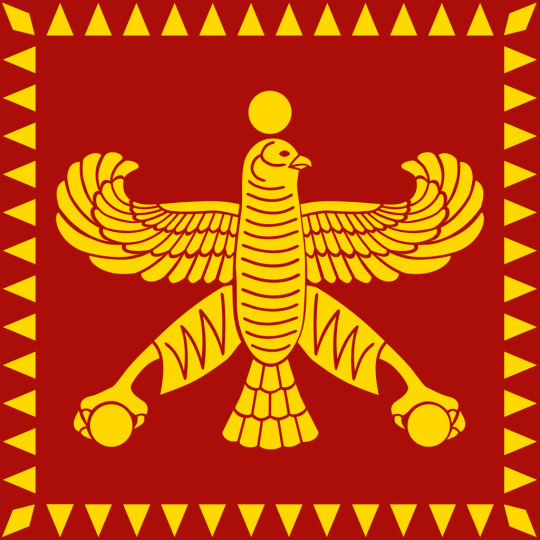
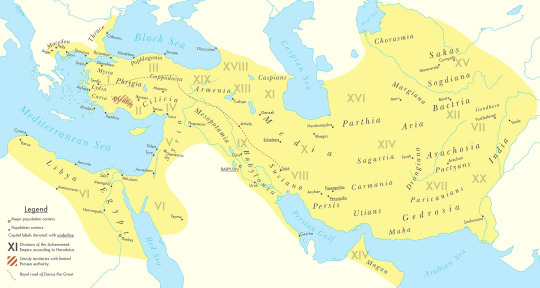

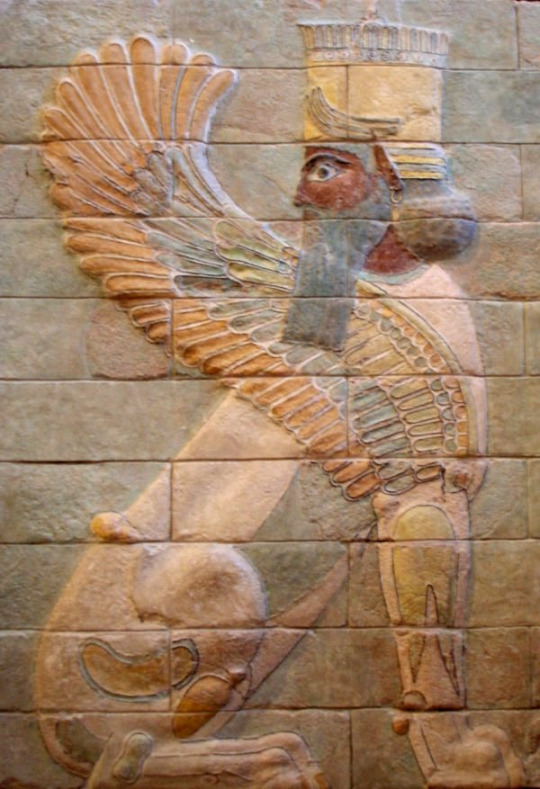
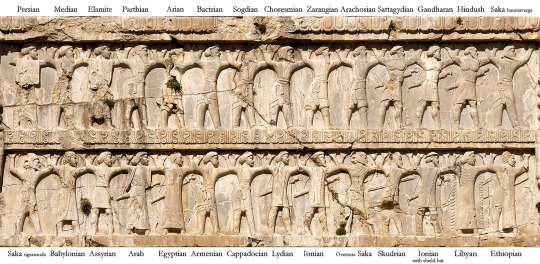
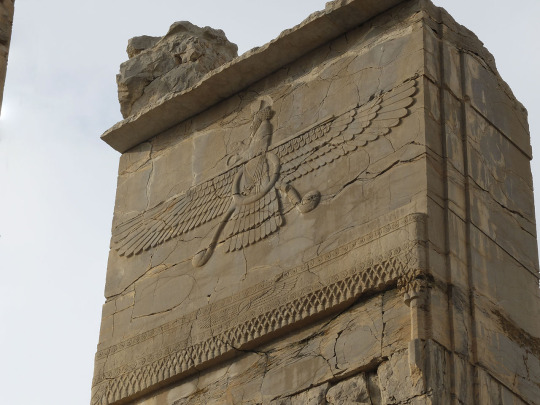
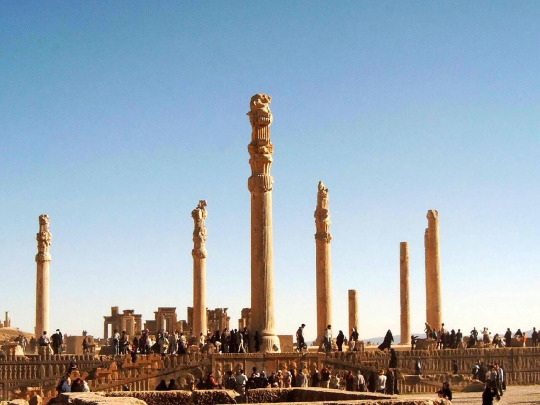
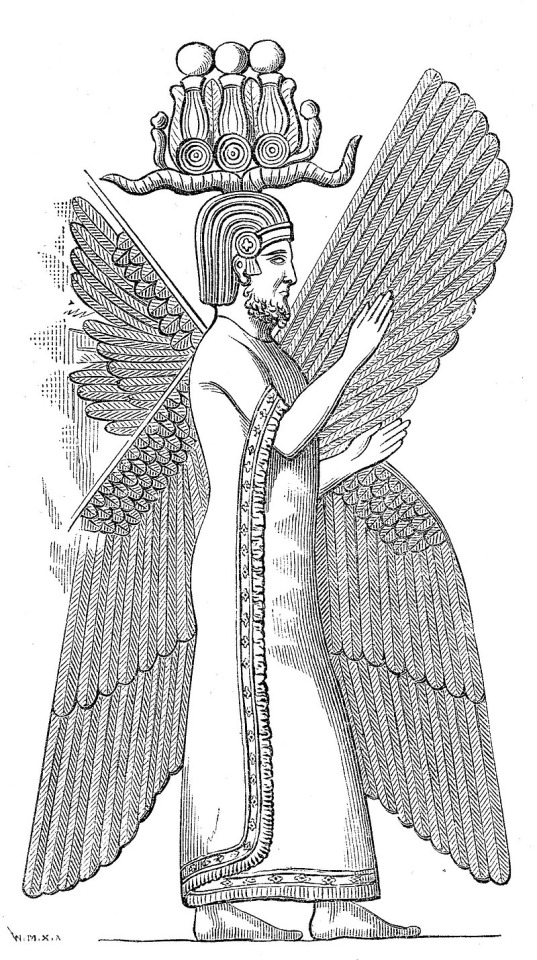
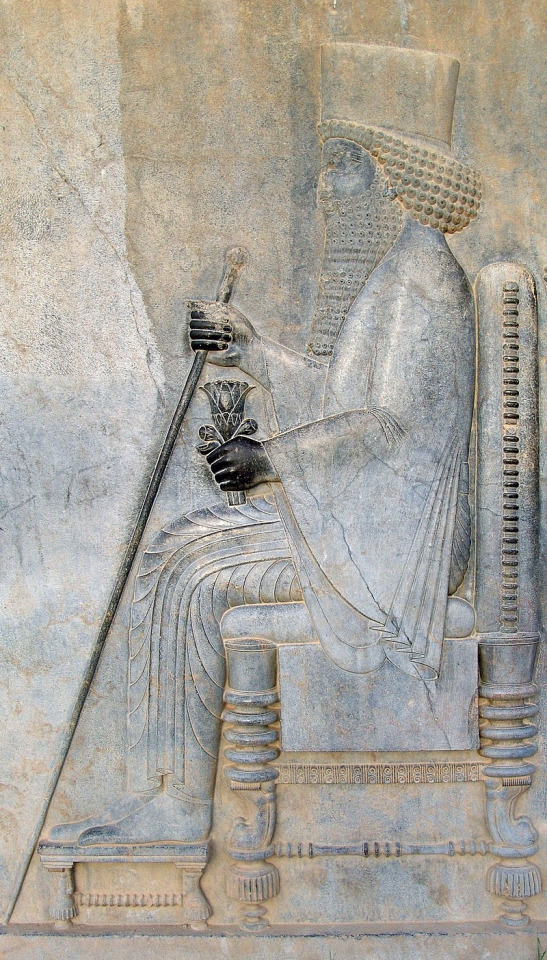

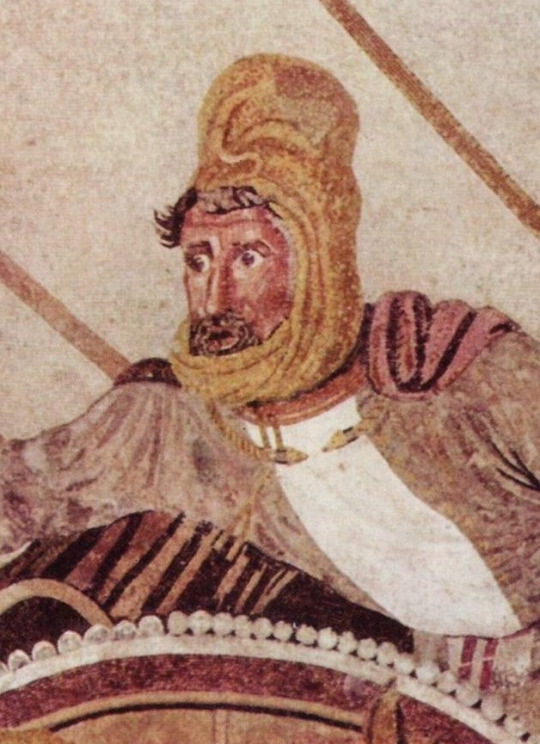
#military history#antiquity#iran#greece#ancient greece#classical greece#ancient ruins#ancient iran#ancient persia#achaemenid#persia#zoroastrianism#alexander the great#cyrus the great#xerxes#artwork#government#history#persian empire#ancient egypt
108 notes
·
View notes
Text
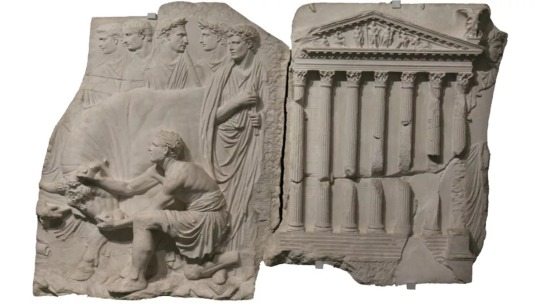
Plaster cast of a relief of a bull being sacrificed in front of the temple of Mars Ultor. This scene comes from a larger monument which is thought to have commemorated the triumph of emperor Claudius in 44 AD after his armies successfully invaded Britain the previous year. The triumph was celebrated in a grand style even though military operations were still ongoing in Britain. Claudius himself spent only sixteen days on the islands and the campaign itself was capably managed by his general Aulus Plautius.
#ancient rome#roman empire#emperor claudius#julio claudian dynasty#aulus plautius#ancient history#ancient culture#ancient civilizations#ancient art#relief#military cred was the only reason claudius invaded britain in the first place#and to be fair he did give aulus plautius an ovation once he came back to rome
37 notes
·
View notes
Text

Paul Rahe is the world’s leading expert on ancient Sparta. His work is indispensable if you want to understand the Peloponnesian War and its relevance today. In Sparta’s Third Attic War Rahe brings together deep historical knowledge, cultural understanding, and sophisticated analysis of grand strategy and geopolitics. Simply outstanding!
7 notes
·
View notes
Note
I see a lot of popular history depicting Ancient Macedon in the style of a Prussia of Antiquity, a martial kingdom that's more an army than a state. How much of this is true?
How Much Like Prussia Was Ancient Macedon?
Especially as the Prussians also used a long pike, it can be very tempting to compare them to Macedon. But it’s problematic, as it imposes backwards some modern concepts of statehood that just don’t really fit antiquity.
Certainly, the ancient world had “states” and “nations,” as well as various democratic systems with voting by citizens (more or less formally defined). But their concepts of nations and democracies were less complex. And monarchies, including chieftainships, were the most common form of government.
Furthermore, in many, if not most of these early systems (monarchy, oligarchy, or democracy), the subject/citizen (male) was also a fighting soldier. I can’t think of any that didn’t assume military duty of subjects/citizens unless one were too young, too old, infirm, or property (e.g., a slave). In many, even resident foreigners (where that was a concept) also owed military service, and sometimes slaves, as well.
In short, the “state” was virtually always the army too.
The real question is which states had a professional, citizen army. That’s a bit different, and much rarer. We see it in Assyria, in Sparta, and in Macedon, to name the three I’m most familiar with, but they’re not the only ones.
In order to exist, these professional citizen-soldier armies required a support system. In Sparta, it was the helots. In Assyria, it was the feudal serf system bucked up later by the provincial system. In Macedon, it was a similar serf system. BUT in Macedon, at least, Philip’s development of citizen soldiers came late, and—perhaps ironically—Philip’s citizen soldiers wound up creating a middle class independent of the early feudal system. (Trying to pick this stuff apart, btw, is really tough, given the state of our evidence. So I’m riffing, based on emerging archaeology.)
Historically, Macedon was an absolute monarchy where the king WAS the law. He had estate-owning aristocratic Hetairoi (Companions) to advise him—but he made them and could break them. Their offices, and their land, owed to him. The king WAS the state, and his Hetairoi helped him to hold power. But this wasn’t particularly unusual at that point in time. The same thing held true for the Thracians and Illyrians, near as we can tell. Also, the Assyrians, and the Medes and Persians when they arrived on the plateau.
What Philip did was form, out of a serf system, a separate professional army supported BY that serf system. It’s pretty much the same thing the Middle and Neo-Assyrian kings did, too. Just as in Assyria, ALL subjects owed military service when demanded, and Assyria had two draft systems in addition to their professional standing army. The Macedonians had a professional army, but also could draft citizen-subjects at need too.
Ergo, ALL these systems interwove the function of the state/king with the army. The two were virtually inseparable. But it was normal for the time, rather than all that exceptional.
#asks#Prussia#Macedon#ancient professional citizen armies#Assyria#ancient monarchies#ancient Macedonia#Classics#ancient military history
12 notes
·
View notes
Text
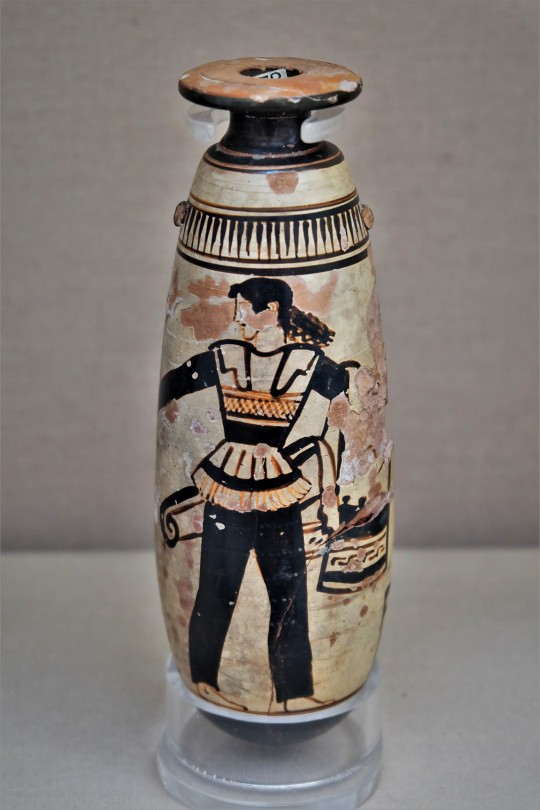
Alabastron (Perfume Bottle) from Athens, Greece dated around 470 BCE on display in the British Museum in London, England
This bottle shows an armed Amazon wearing armour and trousers. The Amazons were a group of warrior women whom the Greeks believed to live North of the Black Sea. Unlike Greek women, they are often represented as wearing trousers, a long sleeved top, and a cuirass like the one here. The Amazon on this bottle also carries a shield with an attached patterned cloth and a quiver.
Photographs taken by myself 2020
#armour#armor#art#archaeology#military history#ancient#greece#greek#fashion#british museum#london#barbucomedie
562 notes
·
View notes
Text
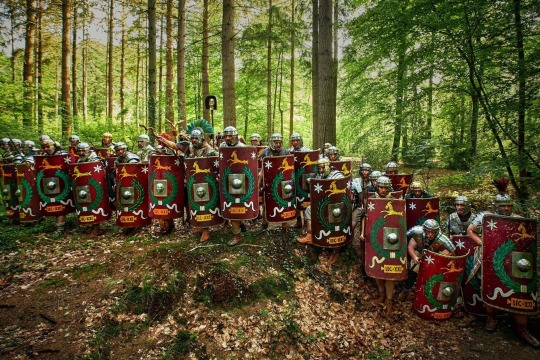
Legion XXI “Rapax.”
129 notes
·
View notes
Text
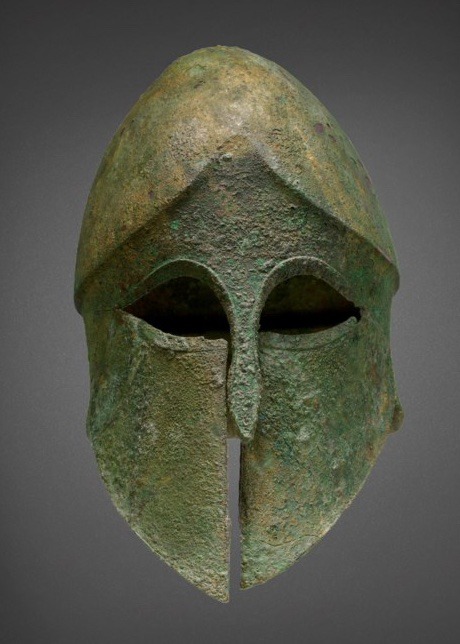


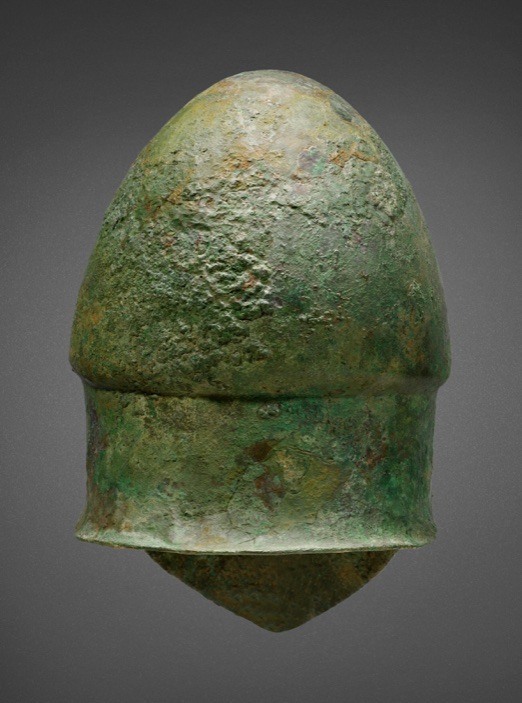
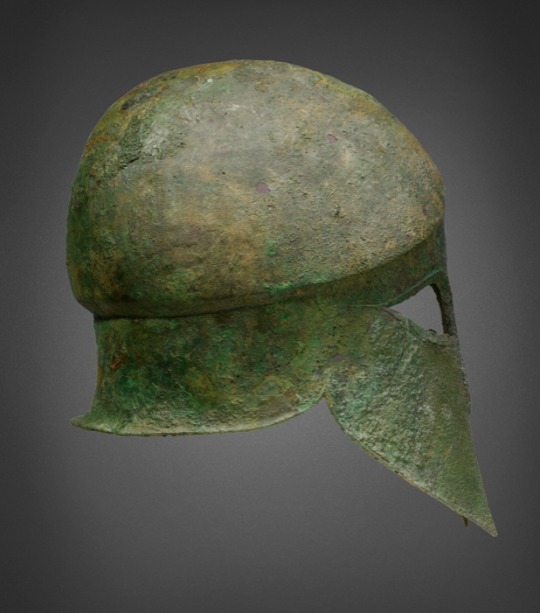

A GREEK BRONZE CORINTHIAN HELMET LATE ARCHAIC TO EARLY CLASSICAL PERIOD, CIRCA 525-475 B.C.
#A GREEK BRONZE CORINTHIAN HELMET#LATE ARCHAIC TO EARLY CLASSICAL PERIOD#CIRCA 525-475 B.C.#bronze#bronze helmet#military equipment#ancient artifacts#archeology#archeolgst#history#history news#ancient history#ancient culture#ancient civilizations#ancient greece#greek history
218 notes
·
View notes
Text
I'm not gonna lie: the girlbossification of Robin Hood and the fact that they put her in medieval Korea as a nobleman's widow in confinement is so intriguing to me
#do you know how much injustice there was in ancient east asia?#im not well versed in korean history but from what i know of chinese history it was NOT a good time to be a woman#or vulnerable or lower class or etc etc. so making the protagonist a woman#AND tying in the rapunzel imagery#AND making maid marian/sheriff of nottingham a young military officer who also cares about justice#is SO interesting#add in the court politics and societal norms of joseon-era korea and the expectations for widowed women#and this drama is just. DELICIOUSSSS#songbird's romcom romp of '24#knight flower
18 notes
·
View notes
Text






The Army of Alexander the Great
Alexander the Great's soldiers were some of the most disciplined, innovative, and battle-hardened forces of the ancient world. His army was primarily composed of Macedonian and Greek troops, augmented by soldiers from conquered regions as his empire expanded. Here’s a brief overview of key elements of Alexander’s military forces:1. The Macedonian PhalanxCore Infantry: The backbone of Alexander's army, the phalanx consisted of tightly-packed infantry armed with the sarissa, a 4-6 meter (13-20 feet) long spear.Formation: Soldiers in the phalanx operated in close ranks, creating an impenetrable wall of spear points. Their discipline and cohesion were unmatched.2. The Companion Cavalry (Hetairoi)Elite Cavalry: The most prestigious unit, composed of noble Macedonians who served as Alexander’s shock troops.Role: They carried out devastating charges, often led personally by Alexander himself, breaking enemy lines and exploiting weaknesses.3. The HypaspistsElite Infantry: Highly-trained and versatile soldiers who acted as a bridge between the phalanx and cavalry.Role: They protected the vulnerable flanks of the phalanx and participated in siege warfare and special missions.
From "The Army of Alexander the Great"
#military art#history#military#soldier#cavalry#alexander the great#alexander of macedon#philip ii of macedon#greek history#macedonian history#ancient greece#late antiquity
26 notes
·
View notes